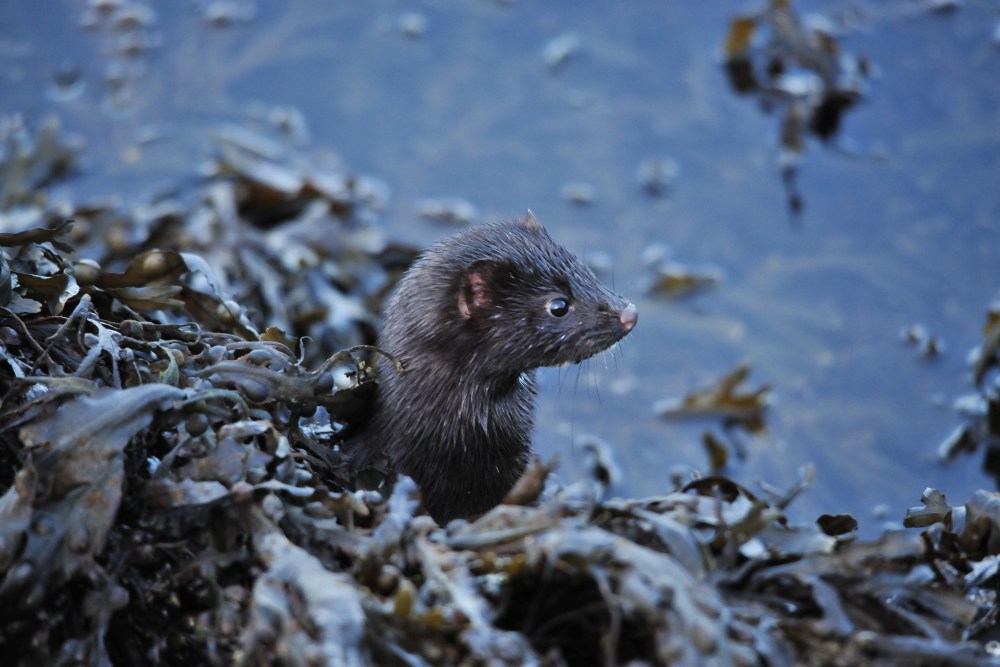American mink

Status
Non-native and widespread
Population
122,000
Scientific name
Neovison vison
American mink are not native to Britain but were brought here from North America in 1929 to be bred commercially for their fur. Since then, releases and escapees have successfully established themselves in the British countryside. Mink have shiny, chocolate-brown fur that looks almost black, especially when wet, and a slightly bushy tail. Mink are mostly nocturnal or crepuscular but may be active at any time. They make their nests in existing burrows by the waterside often between tree roots or in old rabbit burrows, which they line with dry vegetation, fur and feathers. They are agile climbers and good swimmers, and have a very well developed sense of smell, which they use to locate their prey and to detect threats.
Head-body length: 30 – 47cm (males are larger than females on average)
Tail length: About half the length of their body
Weight: 0.5 – 1.5 kg
Lifespan: Up to 6 years in the wild
Reproduction
Mating occurs in March and April and a single litter of 4 – 6 kittens is born usually in May. Weaning starts at 5 – 6 weeks and the young learn hunting skills from their mother before leaving the nest at 13 – 14 weeks.
Diet
Rabbits, small mammals, fish and birds such as ducks and moorhens, as well as invertebrates.
Habitat
Aquatic habitats, such as streams and rivers, reed-beds and estuaries, where there is abundant waterside vegetation for cover.
Predators
Few natural predators but otters, badgers and golden eagles have been recorded as predators in other countries.
Threats
Trapping and shooting.
Status and conservation
Non-native and widespread.
Population size and distribution
GB population 122,000. The population of American mink has continually declined over the last 25 years. Mink are widely distributed throughout mainland Great Britain and Ireland, and are present on a few islands, including Lewis, Harris and Arran.
Did you know?
Studies of mink in the wild have shown that they can dive 100 times in a day, typically to depths of about 30cm and for durations of 10s, but dives of up to 3m and 60s duration have been recorded.
